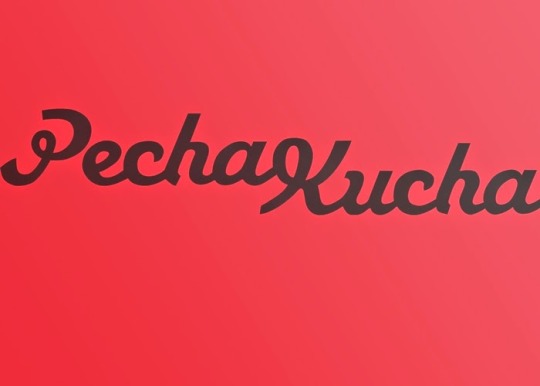One of my favorite parts of the 1989 movie "Look Who's Talking" is when the infant tries to figure out how to drive a car. You just put the little stick into the hole, move your foot back and forth, and move the big circle around. We've all seen it done, how hard can it be?
We've all seen what teachers do, too, thanks to years of schooling. As with the car-driving baby, our picture of what teachers do was formed when we were children, but that doesn't stop us from thinking that we know what teaching is. How hard can it be? We know what it looks like, or, more to the point of this blog post, we know it when we see it. We know what it should look like.
LegibilityI first encountered the concept of
legibility in a
blog post by Venkatesh Rao in his blog
Ribbonfarm. The concept was originally expressed in a book by James C. Scott called
Seeing Like a State: How Certain Schemes to Improve the Human Condition Have Failed. I'll quote Rao's excellent summary of how the failure comes about:
Here is the recipe:
- Look at a complex and confusing reality, such as the social dynamics of an old city
- Fail to understand all the subtleties of how the complex reality works
- Attribute that failure to the irrationality of what you are looking at, rather than your own limitations
- Come up with an idealized blank-slate vision of what that reality ought to look like
- Argue that the relative simplicity and platonic orderliness of the vision represents rationality
- Use authoritarian power to impose that vision, by demolishing the old reality if necessary
- Watch your rational Utopia fail horribly
The big mistake in this pattern of failure is projecting your subjective lack of comprehension onto the object you are looking at, as "irrationality." We make this mistake because we are tempted by a desire for legibility.
The Illegibility of TeachingI read this article just as I had started teaching again after a 25-year hiatus. I was being reminded of what I love about teaching and what annoys me about teaching. I realized that I had found the perfect concept for describing what annoys me: though everyone thinks they know what teaching is, teaching is largely illegible, even to other education professionals.
This illegibility is never attributed to the observer's ignorance. It is always seen as a sign of chaos in need of order. The preferred order is for the classroom and the teachers and the students to have a certain "look." This might mean signs of "discipline," an atmosphere of "quiet, steady diligence," or the appearance of "motivated" students led by an "engaging" teacher. Whatever signifies legible order for the observer is the ideal, even if that order results in no actual learning. One of my school principals insisted that he could poke his head into a classroom and tell at a glance if a teacher was "getting it done." Legibility is more important than education. More to the point, education is to be found in the legibility of the enterprise rather than the results.
I don't mean to complain, I'm just trying to understand. Certainly there are bureaucratic, political, and commercial forces pushing education in directions that suit their various non-educational agendas. This happens in all spheres of life, and it is easy to spot and understand. What bothers me is when intelligent and well-intentioned people confuse complexity with irrationality. It is very difficult to correct this misperception.
* * *
PseudoteachingThis brings me to a related concept called
pseudoteaching. This concept is
defined by Frank Noschese in his blog
Action-Reaction:
The key idea of pseudoteaching is that it looks like good teaching. In class, students feel like they are learning, and any observer who saw a teacher in the middle of pseudoteaching would feel like he’s watching a great lesson. The only problem is, very little learning is taking place.
What is so seductive about pseudoteaching is its legibility, not its effectiveness. Everybody is happy: the teacher feels great, the students know exactly what is expected of them, any visitor to the classroom is suitably impressed. What makes everyone happy is that no-one's misconceptions or misperceptions are being seriously challenged. And that's also why so little learning is taking place.
Here we have a mutually-agreed-upon legibility, what Timothy Slater has called the
Hidden Contract. Inasmuch as we all agree that a classroom should look like
this, and as long as the classroom in fact does look like
this, then everyone is comforted by the apparent order (or apparent lack of chaos).
One of the guest pseudoteaching entries in Action-Reaction is
Khan Academy and the Effectiveness of Science Videos by Derek Muller. He describes the phenomenon of student satisfaction with pseudoteaching this way:
Research has shown that these types of videos may be positively received by students. They feel like they are learning and become more confident in their answers, but tests reveal they haven’t learned anything.
And what is meant by "not learning anything?"
Students have existing ideas about scientific phenomena before viewing a video. If the video presents scientific concepts in a clear, well illustrated way, students believe they are learning but they do not engage with the media on a deep enough level to realize that what is presented differs from their prior knowledge.
(Read more about Muller's research here:
What Puts the Pseudo in Pseudoteaching?)
Rationalizing TeachingOne way to "rationalize" teaching so it is more legible is to simplify the end result. As Rao points out,
. . . a reality that serves many purposes presents itself as illegible to a vision informed by a singular purpose. Any elements that are non-functional with respect to the singular purpose tend to confuse, and are therefore eliminated during the attempt to "rationalize."
If the end result of teaching is reduced to, say, students passing a certain test, then teaching itself can be rationalized and made quite efficient and effective. The IQ test, for instance, was originally developed as an expedient military management tool. It has become the very definition of intelligence in the minds of many, reducing a complex human trait to a single legible number.
There is a kind of learning called
procedural learning. Procedural learning is the first step toward acquiring a skill, and it usually involves practicing a procedure, recipe, or algorithm until it can be performed correctly and automatically. It is a favorite goal for teaching because the path to successful learning is quite straightforward. Procedures, even complex ones, are ultimately rational, and thus legible. A classroom that is focused on procedural learning is also legible.
There are those who would like to define education as being simply this: learning how to successfully execute a procedure. I, for one, would prefer a definition that encompasses a great deal more. As a physics teacher I value rational thinking, the interplay of perception and concept, creative problem-solving, and the exercise of judgement when executing procedures. I also value observing, dreaming, and play. Can any of these preferences of mine be successfully taught? Should I even try? When does the goal become so complex that it becomes illegible to me, and I fall into the traps of rationalizing or pseudoteaching?
Maybe I could define education as simply this: learning how to convert an illegibly complex experience into a legible one without falsely rationalizing it.









